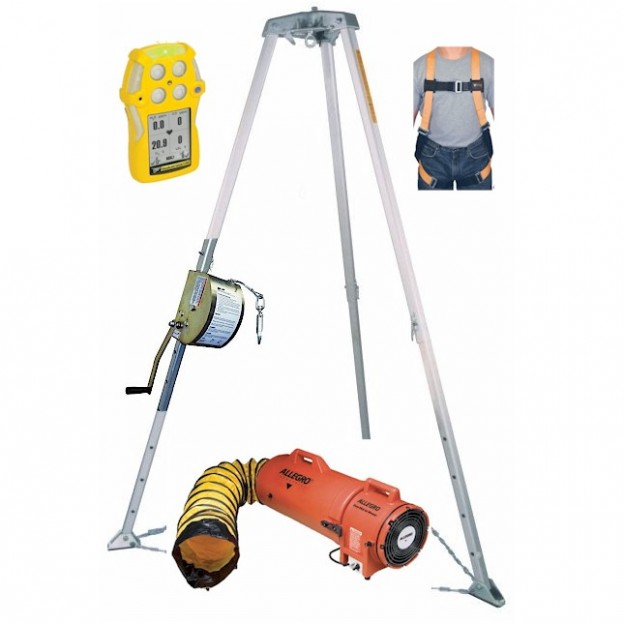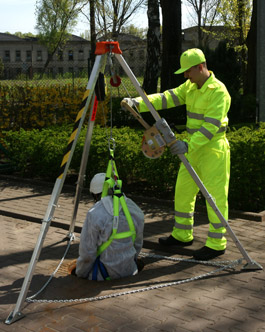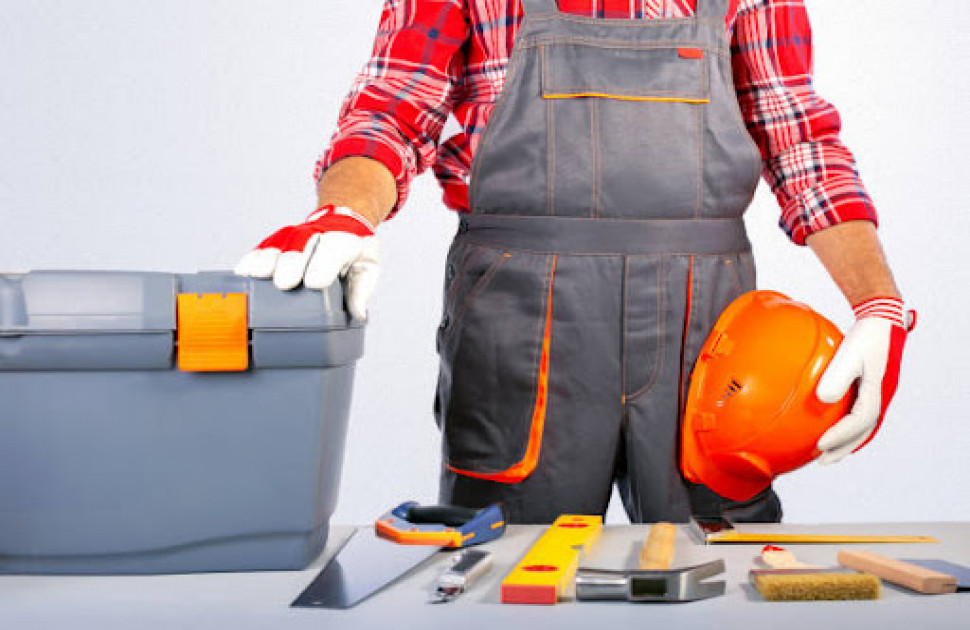Table Of Contents
- Introduction
- Types of Confined Space Equipment
- Conclusion
- Key Takeaways
- FAQs
Introduction
Working within confined spaces poses a unique set of challenges and potential dangers that necessitate the utilization of specialized equipment to guarantee the safety and well-being of the individuals involved.
Whether it involves the tight confines of a storage tank, a sewer system, or a manhole, having the appropriate tools and Confined Spaces Equipment is of utmost importance.
Confined spaces present unique challenges, and having the right equipment is non-negotiable for ensuring safety and efficiency.
Types of Confined Space Equipment
Here are the must-have equipment spaces you need to know about.
- Communication Equipment
One of the foremost considerations in confined space work revolves around communication.
Those operating within these confined areas must be able to maintain contact with their team members located outside.
Commonly used communication equipment includes two-way radios, walkie-talkies, and electronic signaling devices.
These instruments facilitate real-time communication and rapid response in the event of unforeseen emergencies.
Two-way radios offer a reliable means of real-time communication, allowing workers in confined spaces to stay connected with their colleagues outside.
This ensures seamless coordination and enables prompt responses in the case of unexpected emergencies.
Walkie-talkies, with their portability and ease of use, are also commonly deployed for clear and efficient communication.
Electronic signaling devices further enhance safety by providing audible and visual signals, serving as an additional layer of communication in situations where voice communication may not be sufficient.
In the challenging environment of confined spaces, these communication tools are indispensable for safeguarding lives and ensuring effective teamwork.
- Descent, Rescue, and Retrieval Systems
In the event of an accident or emergency, the availability of a secure and efficient means for entering and exiting confined spaces is critical.
Descent and retrieval systems, comprising harnesses, lifelines, and winches, are indispensable for ensuring both worker safety and the effectiveness of rescue operations.
These systems offer a means for lowering workers into confined spaces and safely extracting them when necessary.
Discover More Fascinating Reads, Step By Step Guide: How To Create Accurate Pipeline Isometric Drawings
- Meters and Monitors
Confined spaces frequently harbor a variety of hazards, including toxic gases, diminished oxygen levels, or combustible substances.
Meters and monitors play a pivotal role in evaluating and continuously monitoring air quality and the environmental conditions within these confined areas.
Gas detectors, oxygen monitors, and other sensory devices serve to alert workers to potential dangers, enabling them to take the requisite precautions.
- PPE (Personal Protective Equipment)
The cornerstone of safety within confined spaces lies in the use of Personal Protective Equipment (PPE).
Workers must wear appropriate PPE to protect themselves against potential hazards.
This may encompass items such as hard hats, safety goggles, gloves, and specialized attire.
In environments with compromised air quality, respiratory protection is also of paramount importance.
There's More to Explore, Non-destructive Testing Guide: Everything You Need to Know
- Signage and Permits
Signage and permits play a critical role in ensuring safety in confined spaces.
The importance of effective identification and hazard warnings cannot be overstated.
Appropriate signage serves as a visual alert system, notifying individuals about potential dangers lurking within these confined environments.
Moreover, entry into confined spaces requires a structured approach.
This entails obtaining permits and adhering to stringent safety protocols.
These permits are indispensable documents that outline the specific conditions under which entry is allowed.
They serve as a formal authorization mechanism, ensuring that only trained personnel enter confined spaces and that necessary precautions are taken.
In essence, signage and permits act as gatekeepers, safeguarding against unprepared or unauthorized access to confined spaces.
They are pivotal components of a comprehensive safety strategy, serving to protect lives and prevent accidents within these potentially hazardous areas.

- Ventilation Equipment
Ventilation equipment stands as the linchpin in the quest to uphold safety in confined spaces.
These tight, enclosed environments can swiftly become breeding grounds for perilous conditions, making effective ventilation systems a non-negotiable requirement.
Typically, these systems consist of tools like blowers and fans, which perform the crucial task of expelling hazardous gases while maintaining an adequate oxygen supply.
The vital role of these ventilation systems cannot be overstated.
By removing harmful gases, they mitigate the risk of asphyxiation, fires, or explosions. Yet their efficacy hinges on more than just their presence.
Proper design, installation, and operation by trained personnel are indispensable to guaranteeing optimal performance.
To illustrate their significance, imagine a storage tank or sewer system where toxic fumes accumulate.
In such environments, a ventilation system acts as a lifeline, transforming a potentially lethal space into one where work can be conducted safely.
In summary, ventilation equipment serves as the unsung hero, ensuring that confined spaces remain not only accessible but also free from the life-threatening hazards that can lurk within.
Don't Miss Out, Importance of Non-destructive Testing
Conclusion
Effective operation within confined spaces hinges upon meticulous planning and strict adherence to safety protocols, with the utilization of the right Confined Spaces Equipment being non-negotiable.
Communication equipment ensures seamless coordination and descent and retrieval systems provide secure entry and rescue capabilities.
Meters and monitors evaluate environmental conditions, PPE safeguards against diverse hazards, signage, and permits reinforce safety procedures, and ventilation equipment sustains a breathable atmosphere.
By comprehensively understanding and employing this equipment, workers can effectively mitigate risks and ensure their safety during confined space operations.
Always bear in mind that safety should remain the paramount concern in any confined space endeavor. Check OnestopNDT for more details.










